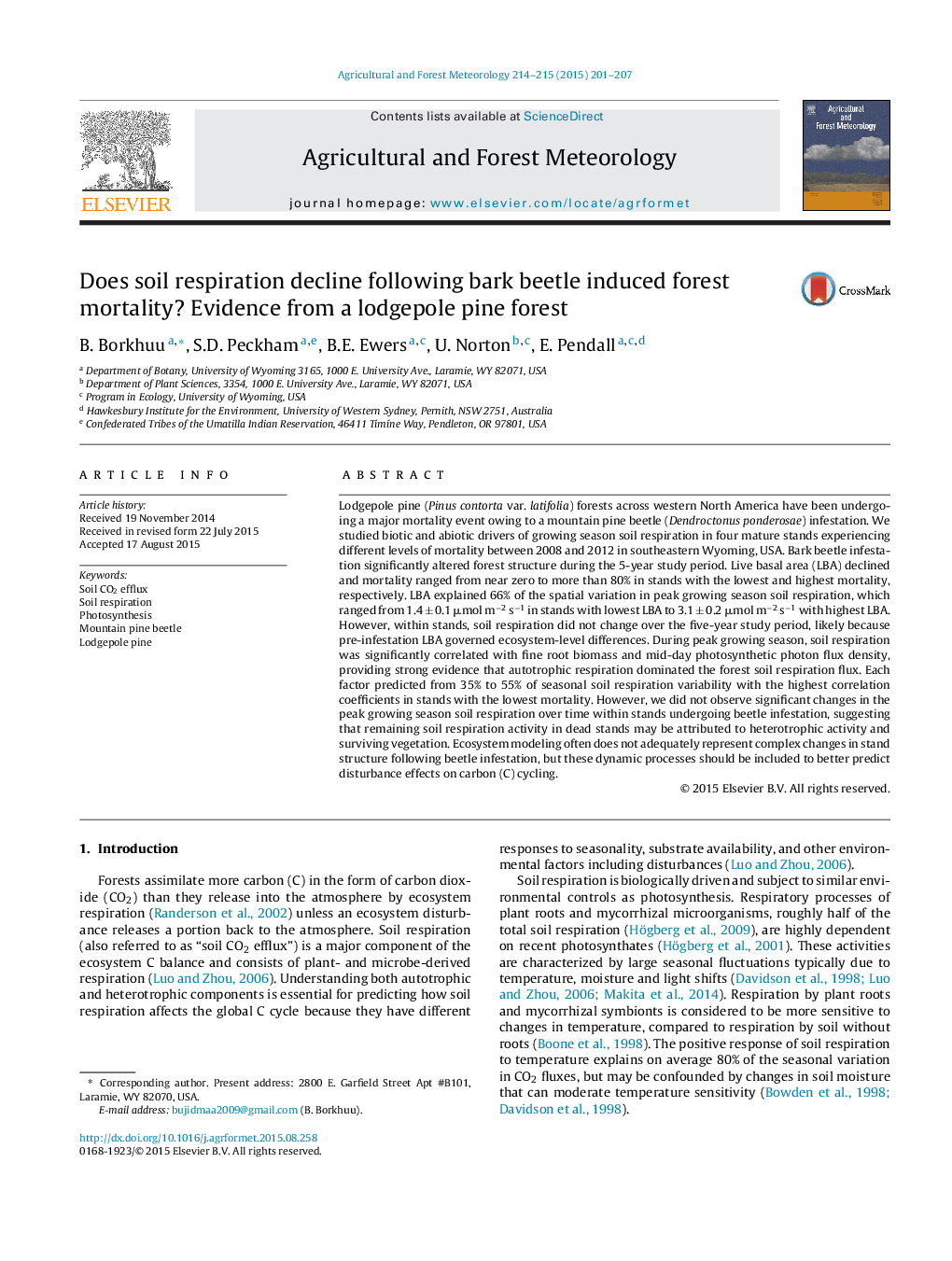| کد مقاله | کد نشریه | سال انتشار | مقاله انگلیسی | نسخه تمام متن |
|---|---|---|---|---|
| 6537185 | 158324 | 2015 | 7 صفحه PDF | دانلود رایگان |
عنوان انگلیسی مقاله ISI
Does soil respiration decline following bark beetle induced forest mortality? Evidence from a lodgepole pine forest
ترجمه فارسی عنوان
آیا تنفس در خاک پس از مرگ جانوران جنگل ناشی از سوسک موجب کاهش می شود؟ شواهد از جنگل کاج لجبله
دانلود مقاله + سفارش ترجمه
دانلود مقاله ISI انگلیسی
رایگان برای ایرانیان
کلمات کلیدی
موضوعات مرتبط
مهندسی و علوم پایه
علوم زمین و سیارات
علم هواشناسی
چکیده انگلیسی
Lodgepole pine (Pinus contorta var. latifolia) forests across western North America have been undergoing a major mortality event owing to a mountain pine beetle (Dendroctonus ponderosae) infestation. We studied biotic and abiotic drivers of growing season soil respiration in four mature stands experiencing different levels of mortality between 2008 and 2012 in southeastern Wyoming, USA. Bark beetle infestation significantly altered forest structure during the 5-year study period. Live basal area (LBA) declined and mortality ranged from near zero to more than 80% in stands with the lowest and highest mortality, respectively. LBA explained 66% of the spatial variation in peak growing season soil respiration, which ranged from 1.4 ± 0.1 μmol mâ2 sâ1 in stands with lowest LBA to 3.1 ± 0.2 μmol mâ2 sâ1 with highest LBA. However, within stands, soil respiration did not change over the five-year study period, likely because pre-infestation LBA governed ecosystem-level differences. During peak growing season, soil respiration was significantly correlated with fine root biomass and mid-day photosynthetic photon flux density, providing strong evidence that autotrophic respiration dominated the forest soil respiration flux. Each factor predicted from 35% to 55% of seasonal soil respiration variability with the highest correlation coefficients in stands with the lowest mortality. However, we did not observe significant changes in the peak growing season soil respiration over time within stands undergoing beetle infestation, suggesting that remaining soil respiration activity in dead stands may be attributed to heterotrophic activity and surviving vegetation. Ecosystem modeling often does not adequately represent complex changes in stand structure following beetle infestation, but these dynamic processes should be included to better predict disturbance effects on carbon (C) cycling.
ناشر
Database: Elsevier - ScienceDirect (ساینس دایرکت)
Journal: Agricultural and Forest Meteorology - Volumes 214â215, 15 December 2015, Pages 201-207
Journal: Agricultural and Forest Meteorology - Volumes 214â215, 15 December 2015, Pages 201-207
نویسندگان
B. Borkhuu, S.D. Peckham, B.E. Ewers, U. Norton, E. Pendall,
